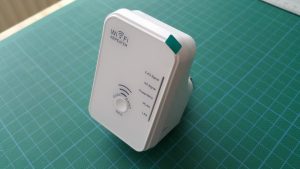4 Easy Steps to Increase Wi-Fi Range

Summary
– Step 1: Position your box or Wi-Fi router correctly to improve its range
– Step 2: Reduce the obstacles between the box and the receiver
– Step 3: Limit the interference to increase the power of Wi-Fi
– Step 4: Extend the range of your Wi-Fi with Powerline adapters or a Wi-Fi repeater
All Internet service providers now offer their subscribers a Wi-Fi connection through the “box”. This has become an essential complement or alternative to the wired connection, as it allows mobile devices – laptops, smartphones, tablets – to access the Internet wirelessly. However, these are waves, so their range is not infinite!
Here are some tips and techniques to increase the range of Wi-Fi.
1. Position your Wi-Fi box or router correctly to improve its range
It is your Internet box (or modem) that emits the Wi-Fi waves. It is therefore essential to place this transmitter to optimize the spread of these waves, and mainly not to prevent their propagation:
– Think about the propagation radius of your Wi-Fi signal! The Wi-Fi waves are emitted in all directions around your box. Therefore, it is preferable to place your receptacle in height rather than on the floor or near the ceiling, for example. Place the box in the room where you are most likely to need Wi-Fi.
– Avoid locking your box in a cabinet. Even if the boxes are more and more “design” and elegant, they are still connected to the phone socket and the power supply by wires, and it can be very tempting to hide all this in a cupboard or a closed TV cabinet, for example. Unfortunately, this is a bad idea: enclosing your box will significantly reduce the Wi-Fi signal range!
– The Wi-Fi boxes and routers are equipped with antennas. Change their position to improve the signal propagation: it is not necessarily the vertical and parallel position of the antennas that is the most efficient!
Tip: in a multi-storey house, place the box on the floor where you want to use Wi-Fi because the floors are usually made of reinforced concrete, which does not let the waves through easily.
2. Reduce the obstacles between the box and the receiver
Some materials deflect and absorb the waves when they are placed between your box and the Wi-Fi sensor; it is guaranteed interference:
– Metal has a very high interference potential.
– Shielded glass, concrete, and plaster are also obstacles to consider.
– To a lesser extent, water, brick, and marble can interfere with Wi-Fi.
– Finally, be aware that wood, synthetic materials, and glass have a small but significant interference potential.
3. Limit interference to increase the power of Wi-Fi
The Wi-Fi signal can be disturbed by devices emitting electric, electronic or electromagnetic waves. It is therefore recommended to place your box or modem as far away as possible from this type of device: television, screens, computer, telephone, and especially microwave ovens, wireless speakers, and other wireless devices that operate on a 2.4 GHz or 5 GHz frequency band, such as high-frequency transmitters, wireless cameras, baby monitors, your neighbors’ Wi-Fi equipment, etc.
Please note: some electrical equipment such as high voltage power lines, electrified railroad tracks, and power plants can create interference. Avoid placing your Wi-Fi box or router near electrical wall cables or circuit breaker boxes.
4. Extend the range of your Wi-Fi with Powerline adapters or a Wi-Fi repeater or Wi-Fi extender


If your Wi-Fi signal strength is still not satisfactory, you can extend its range with:
- a device called a Wi-Fi repeater or another one called Wi-Fi extender sold in high-tech equipment stores or department stores;
- powerline adapters: small boxes that plug into electrical outlets and extend the range of the Wi-Fi signal.
Hope the above steps help you increase your Wi-Fi connection.
Read more:
| 2 Easy Steps to Connect a Printer to Bluetooth |


2 replies on “4 Easy Steps to Increase Wi-Fi Range”
[…] 4 Easy Steps to Increase Wi-Fi Range; […]
[…] Wi-Fi extender, also referred to as a Wi-Fi booster, is a device that is connected to the wall and […]